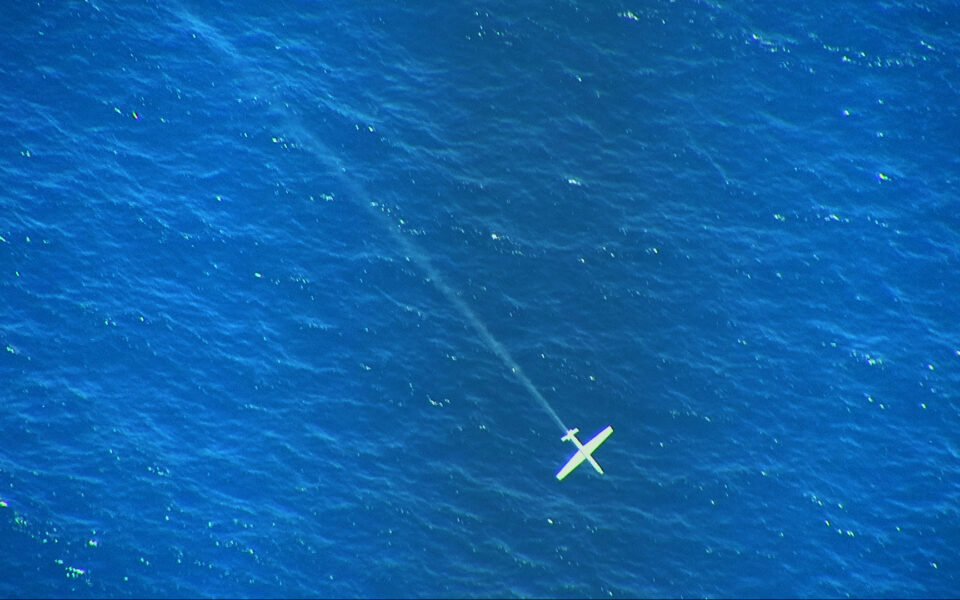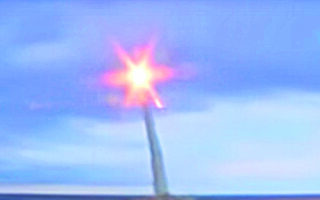Anti-drone lasers for the Aegean?
Israel Space Agency Chairman General Isaac Ben-Israel discusses ‘Iron Beam,’ Greece’s prospects

Four decades after the Reagan Doctrine and the launch of the “Star Wars program” to deploy advanced weapons including the use of high-energy laser beams to counter enemy ballistic nuclear attacks, Israel managed to implement Reagan’s strategic thinking in actual defense technology by developing the “Iron Beam” air defense system. The new system, developed by the Rafael company and field-tested, gave the Israel Defense Forces the ability to intercept threats such as drones, artillery shots and rockets within a 7-kilometer range.
The chairman of the Israel Space Agency and professor at Tel Aviv University, General Isaac Ben-Israel, explains in an interview with Kathimerini how the new defense shield was achieved.
What are the characteristics of Israel’s newest military development, the laser technology, and how functional can it be?
The new system involves the interception of rockets using a high-powered laser. When we started looking in the 1990s for solutions against rocket attacks we started with high-powered ones. At that time the only ones who could have this technology were the Americans. So we had the project, the joint project between the State of Israel and the US Army. And to use high-power lasers against rockets, we proved the concept. I mean, we brought rockets from Israel. We launched them in real life and the laser that was put in California shot down those rockets. At the end of the 90s, we said that now that we had proved the concept, we should weaponize it. Together with the Americans, we found that it is very problematic to miniaturize the laser and still have enough power. And you can miniaturize it, even put it in your pocket. But the power of the laser will not be capable of shooting down a missile. It took us more time than we thought, but eventually, we solved the problem. We thought, “OK, let’s take a few beams and each one of them will hit the rocket so two or three or four different beams will be enough to explode the rocket.” But then we found that the laser beam is transmitted in pulses of energy and if you send it continuously, you do not gain enough energy power to explode the rocket. Therefore, you need to concentrate the laser beams in pulses. When you have two pulses coming from different beams, they have to hit the same point. It is not that one of them will hit the front of the rocket and the other one will hit the level of the rocket. It will not work. So, we had to find technologies to concentrate them on the same point, at the same time. This is what we call coherence.
It took us many years to solve this problem. Now it is solved. And that is why now we have a full-scale development project of building these “laser cannons.” This technology consists of the solution to low-range threats like a UAV or rocket or even long-range missiles. The longer the range of a missile, the easier it is to intercept. The problem with the short ones is that you do not have enough time. That is why we deal with laser beams. For example, here is the interceptor and here you see the missile, you shoot a missile at the rocket. It takes the missile around 20 to 30 seconds to fly by itself. On the other hand, with the new system, you shoot a laser beam, which goes at the speed of light in a fraction of a second and hits the target. So if the missile comes from 1,000 kilometers or a few thousand kilometers, then you have enough time to shoot a conventional interceptor, but with short-range missiles, you lack the time.
‘Now we have a full-scale development project of building these “laser cannons.” This technology consists of the solution to low-range threats like a UAV or rocket or even long-range missiles’
The islands of Greece face multiple threats from UAVs. Is it a cheap and effective solution to deploy systems such as the Iron Beam?
The time it takes for the laser to fly to the target is a fraction of a second. So, if there are many targets in the air, you can direct your laser to the first one and shoot it down. It will not take you 20 seconds but only one second. Then take the same beam directly to a different target and then shoot the second one, the third one with the same weapon system. Of course, you can have more than one system. So, it is very practical.
What is the cost of intercepting a target with a laser beam compared to launching a missile?
The cost is also a great advantage because with Iron Dome, when you shoot a missile against a rocket, the missile costs $50,000. Here you shoot a laser beam, which is produced from electricity. Therefore, the cost of the one-shot is the cost of energy needed to produce the laser beam. And this is around $1,000. So, 50 times less than classic interceptors.
Do you expect that the Greek-Israeli cooperation will lead to an exchange of military knowledge or even the development of new systems?
Well, it depends very much on the relations between the two states. If it succeeds and if there is the right confidence between the two states, it is much better than any other alternative. There are two small states, you are bigger than us, but still in the category of small states, not far away from each other. Both states are in the Mediterranean. Both democracies. Therefore, there is no reason for this cooperation not to succeed. The chances are high.






